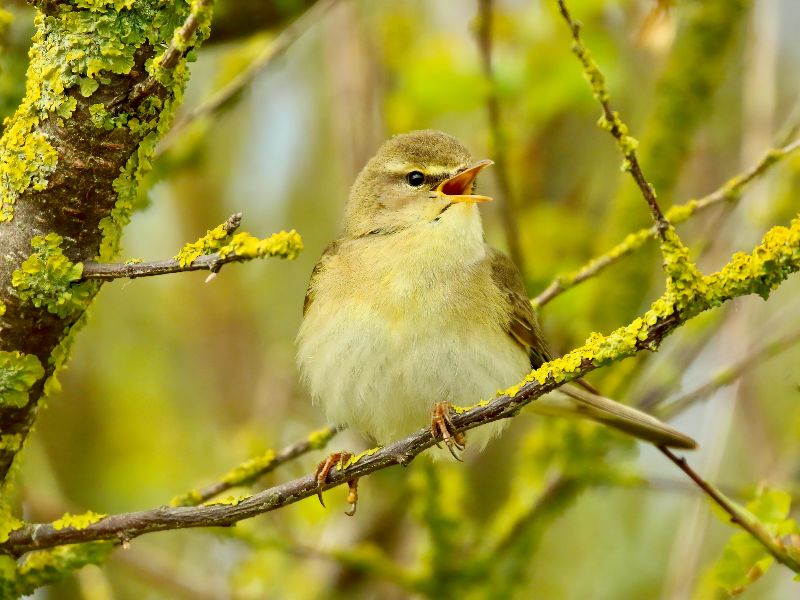A tale of two warblers – the ups and downs of birds in England

The latest BTO/RSPB/JNCC Breeding Bird Survey (BBS) report shows the very different fortunes in England for two almost identical warblers, the Willow Warbler and the Chiffchaff.
Due to the varying COVID-19 restrictions across the UK the 2020 BBS report can only publish the latest trends for a reduced set of species in England but it still makes for very interesting reading. Both the Willow Warbler and the Chiffchaff breed throughout England and both are found in woodland, woodland edge and scrub habitats but their fortunes here are very different. During the last 24 years the Willow Warbler has seen its breeding population decline by 45%, whilst that of the Chiffchaff has increased by 114% over the same period.
Willow Warbler and Chiffchaffs look very similar and inhabit very similar habitat during the breeding season, yet they have a very different migration and overwintering strategy. The Willow Warbler is a long-distance migrant that spends the winter months in sub-Saharan Africa, whilst the Chiffchaff is a short-distance migrant that heads to Europe and as far south as North Africa – some of our breeding Chiffchaffs may even stay here in the UK during the winter months. So, it is likely that they face very different pressures during the migration and overwinter period that are contributing to their very different long-term trend.
Two other woodland birds, the Nuthatch and the Great Spotted Woodpecker, have seen their populations more than double during the last 24 years, up by 105% and 117% respectively but the same can’t be said of another familiar hole-nesting bird; the Starling has seen its breeding population fall by 60% over the same time period.
For one bird the change in its fortunes couldn’t be more different from the handful of pairs that called a few Welsh valleys ‘home’ in the 1980s. The report shows that over the last 24 years, the Red Kite has increased by a staggering 18,695%. The reintroduction of this bird to our skies now means that many of us can see them from our own backyards and it is incredible to think that as recently as the early 80s, this amazing bird was heading towards extinction in the UK.
Sarah Harris, BBS National Organiser at the BTO, said, “2020 was a very difficult year for many, and it looked like we might have a very poor survey season for BBS coverage and data; the first since 2001 when Foot and Mouth kept us out of the countryside. However, restrictions were lifted just in time for some of our brilliant volunteers to get out and monitor their BBS squares, and it is down to them that we have anything to report on at all! Thanks go to all the current and retired BBS volunteers that we have such a powerful long-term dataset allowing us to track the contrasting fortunes of species such as Willow Warbler and Red Kite.”




